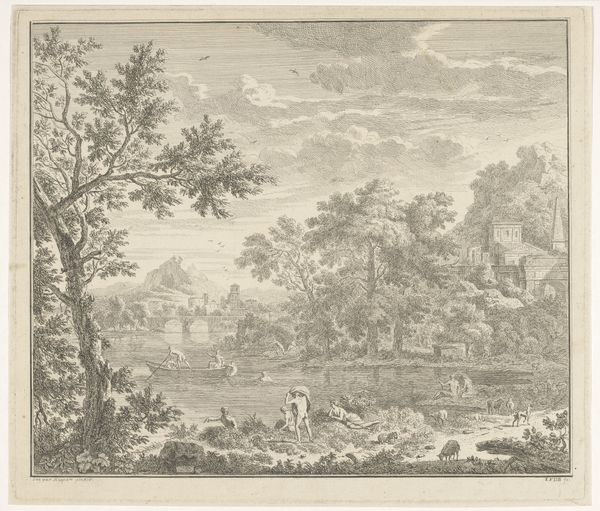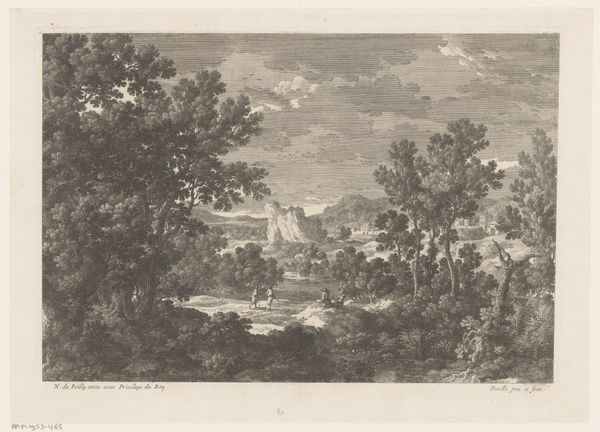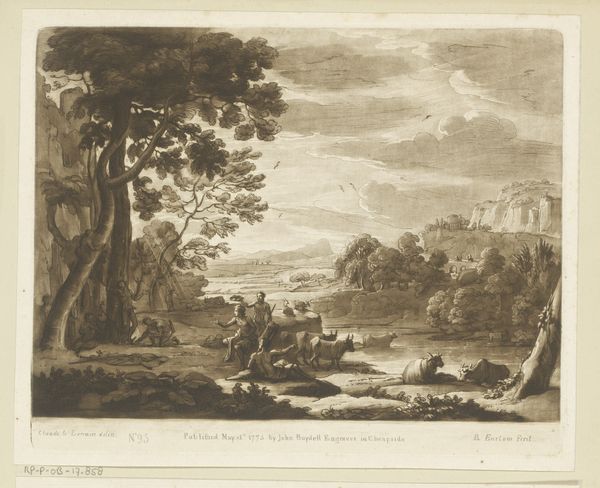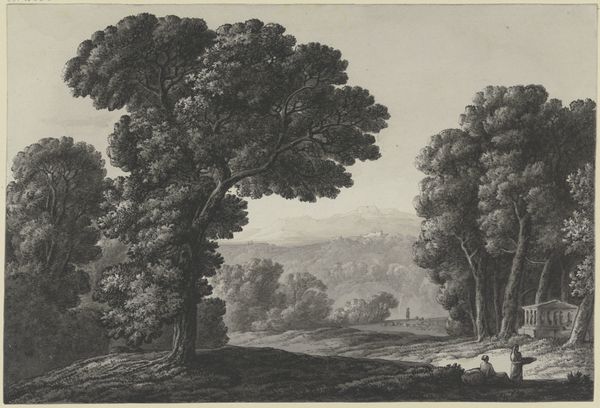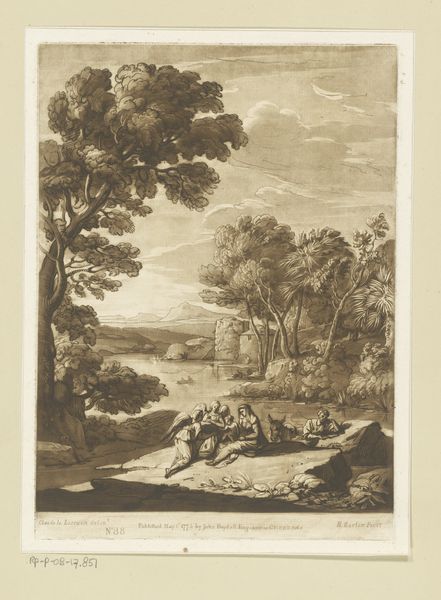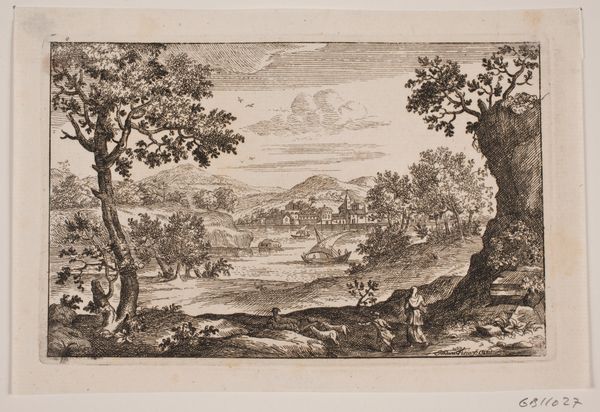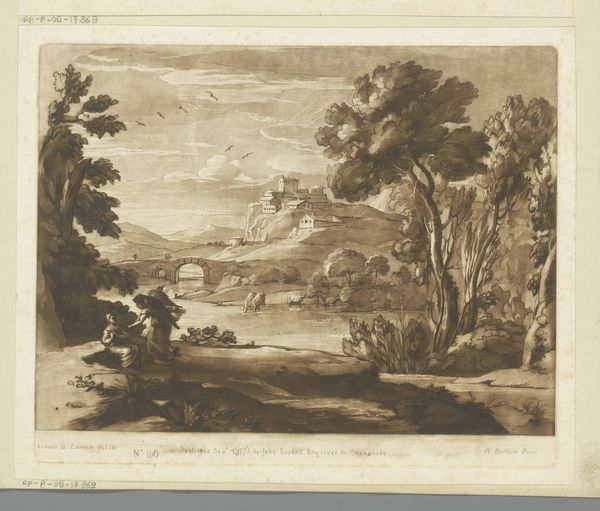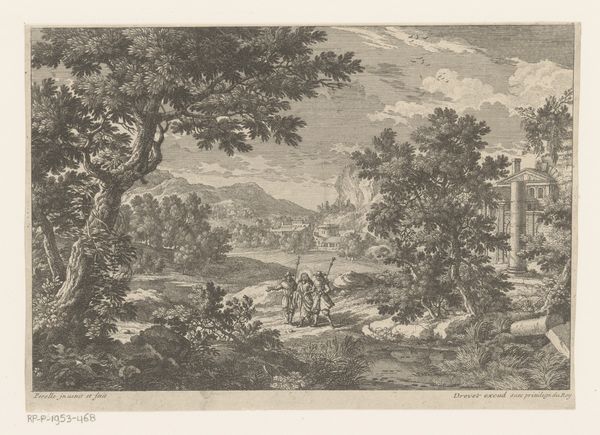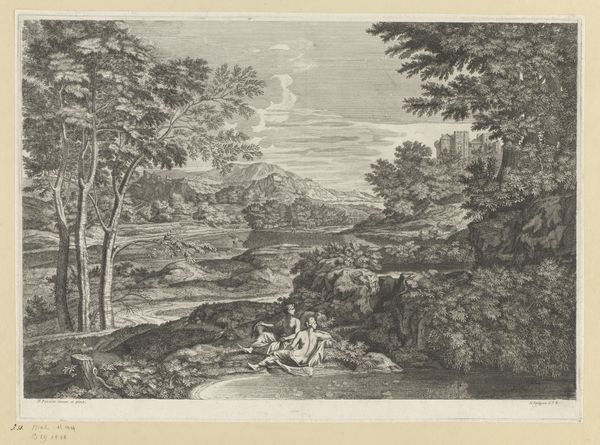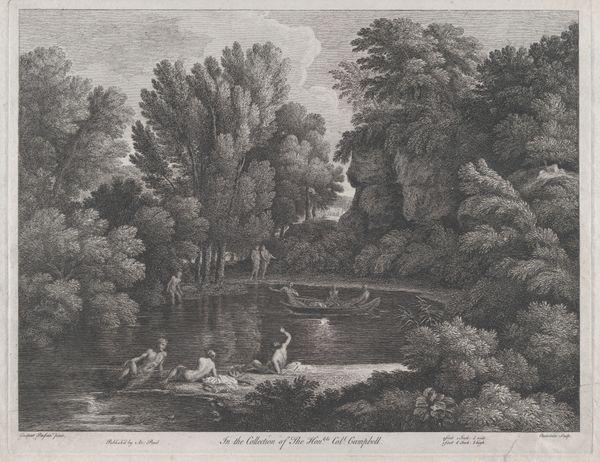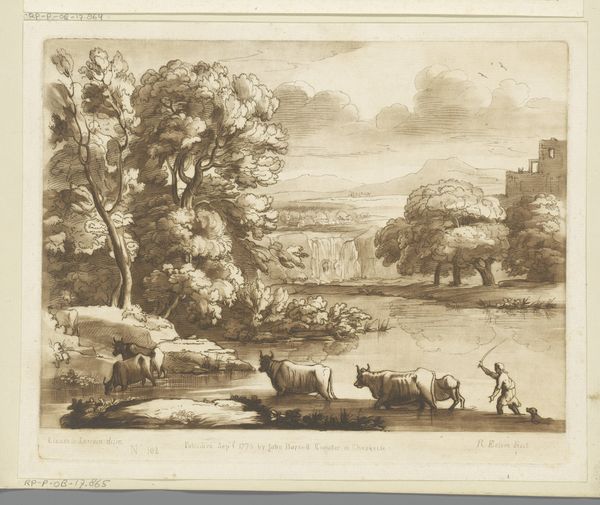
engraving
#
baroque
#
natural tone
#
old engraving style
#
landscape
#
line
#
genre-painting
#
natural palette
#
engraving
#
realism
Dimensions: height 523 mm, width 704 mm
Copyright: Rijks Museum: Open Domain
This is a river landscape made by Jean Baptiste Scotin, sometime before 1740, using engraving on paper. Engraving is a printmaking technique that involves incising an image onto a metal plate, then using this to make multiple impressions. The fineness of the lines, and the gradations of light and shade, are all down to Scotin’s control of his burin, the tool used for cutting. It requires tremendous skill and patience. The effect is quite different from a quickly sketched drawing or painting. Instead, we get a sense of calm, of ordered control – a world of picturesque beauty, with figures neatly arranged in the foreground. Even the labor of the shepherd, playing his flute as his flock grazes, is idealized. Consider this print not just as a picture, but as the outcome of a complex, time-consuming process. It reminds us that even the most apparently straightforward images are shaped by the means of their making, and by the social and economic conditions in which they are produced.
Comments
No comments
Be the first to comment and join the conversation on the ultimate creative platform.

